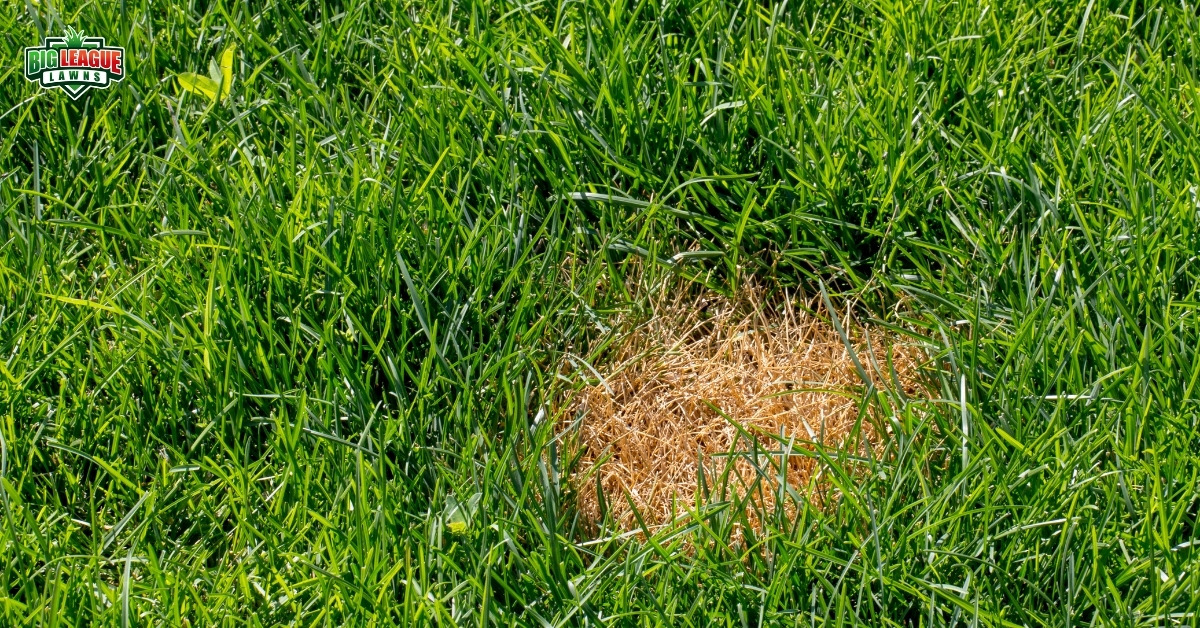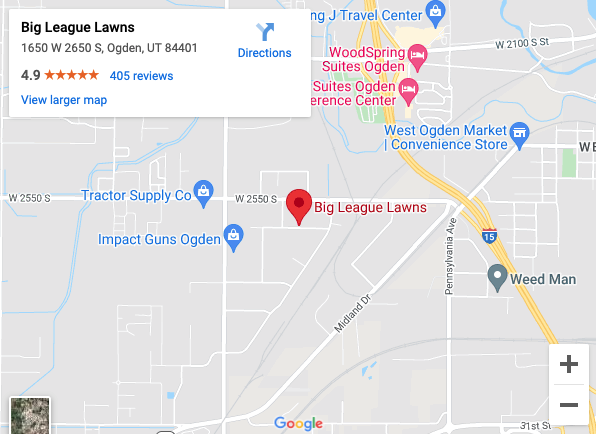When dead grass or discolored areas appear on your pampered lawn, the problem is usually a disease or lawn fungus. Correct disease or lawn fungus identification is the first step to determining which fungal or lawn disease treatment will eliminate the problem and restore your beautiful lawn to full health. Use this handy quick guide to help you identify, treat, and prevent lawn fungus and disease from recurring.
Topics covered in this blog:
- How to Tell if Your Lawn Has a Fungus
- Treatment for Lawn Fungus
- Preventing Lawn Disease and Fungus
- DIY or Professional Treatment for Lawn Disease and Fungus
- Professional Experts for Lawn Disease or Fungus Treatment
If you need a little extra help to transform your yard into a beautiful, healthy lawn, call our experts at Big League Lawns.
How to Tell if Your Lawn Has a Fungus
Treating your grass for the wrong thing could only lead to more damage. To avoid this risk, having a lawn professional identify the cause of the symptoms on your lawn is essential. Common symptoms of lawn fungus include:
Discoloration
The grass turns brown, yellow, or tan in some spots. However, hot temperatures, insufficient watering, or insect infestation can also cause this.
Mildew
Mildew looks like a layer of white substance on the grass, usually in shaded areas.
Leaf Spot
Spots on blades of grass can indicate infection. The grass may look brown, tan, or gray, while the spots on the grass blades may look purple or red.
Dollar Spot
Brown or tan spots the size of a silver dollar across the lawn, typically in hot, humid weather, may indicate brown patch lawn disease.
Blight
Various forms of blight impact different grass species. One type of blight might kill the grass, whereas another type may cause viscous white or brown patches to appear.
Keep in mind that some lawn diseases can affect virtually all types of grass, while others can only infect some species of grass. For example, Rhizoctonia can impact all kinds of cool-season and warm-season turfgrasses, whereas fusarium blight only affects bluegrass. Be sure you know which grass species you have and the types of lawn diseases that can impact it before you choose a remedial lawn treatment for it.
Treatment for Lawn Fungus
If your grass has a weather-related problem, such as snow mold that happens after snow melts, apply your lawn fungus treatment whenever seasonal conditions require. Some lawn diseases can spread and kill your entire lawn. So, as soon as you correctly identify the disease or fungus damaging your grass, start treatment as quickly as possible.
- Start by experimenting to determine whether the problem can be remedied by changing your current lawn care practices, for example:
- Don’t over-water.
- Don’t over-fertilize.
- Don’t mow the grass too short.
- If you prefer organic treatment, you can try applying neem oil, cornmeal, or baking soda on small areas of fungus. Be aware of the potential shortcomings of this approach.
- But for the majority of lawn fungus types, you need to use an antifungal treatment to kill spores on the grass. You will probably need to reseed the treated area. Choose a product formulated for your lawn’s grass species to avoid killing healthy grass and the need to reseed larger areas.
Preventing Lawn Disease and Fungus
Of course, the ideal way to manage lawn disease and grass-damaging fungus is to prevent these problems from occurring. Some seemingly good lawn care habits can invite such issues. So, use these helpful methods of fungus prevention and lawn disease control:
Cleaning
Leaving branches, leaf piles, and other yard debris provides the ideal environment for fungal growth. Clear away landscape debris.
Watering
Over-watering can lead to mildew, mold, and lawn fungus. Watering with appropriate amounts and frequency is essential to healthy, disease-free grass.
Mowing
Grass cut too short is more vulnerable to disease. Mowing routinely is key to good lawn maintenance, but don’t cut the grass too short.
Drainage
Allowing standing water in low areas that do not drain well promotes fungal growth on grass. So, ensure proper drainage.
Testing
Grass issues can arise from poor nutrition in your lawn—test soil to maintain nutrient balance.
Tools
Rakes, mower blades, hoes, shovels, clippers, and other lawn tools can carry spores. Clean your lawn tools after use with a gentle mixture of bleach and water to kill fungal spores.
DIY Lawn Disease and Fungus Control or Professional Treatment
Do-it-yourself lawn cultivation that is working well saves money. But, when a disease or fungus begins killing or discoloring the grass on your lawn, choosing the wrong treatment can worsen the problem. Having a lawn professional examine and treat your grass ensures that you get the proper treatment for the specific problem.
Consulting with a Utah lawn expert for a solution avoids the mistake of putting treatment agents on your lawn that are unnecessary and ineffective. It also means that you will not have to go through a trial and error process and will be able to restore your lawn and enjoy its full beauty again as quickly as possible.
Stop Lawn Disease or Fungus with Big League Lawns Today!
We are a lawn care company in Ogden, Utah. Big League Lawn cultivation experts provide lawn fertilization, lawn aeration, and lawn pest control. Our professional team has more than 40 years of combined experience developing beautiful lawns in Utah. All our lawn care services are 100% guaranteed. We serve Weber and Davis counties in Utah.
Call Big League Lawns at (801) 773-9999, or contact us online to schedule your FREE LAWN ANALYSIS and start the transformation of your yard into the beautiful, healthy lawn of your dreams!



